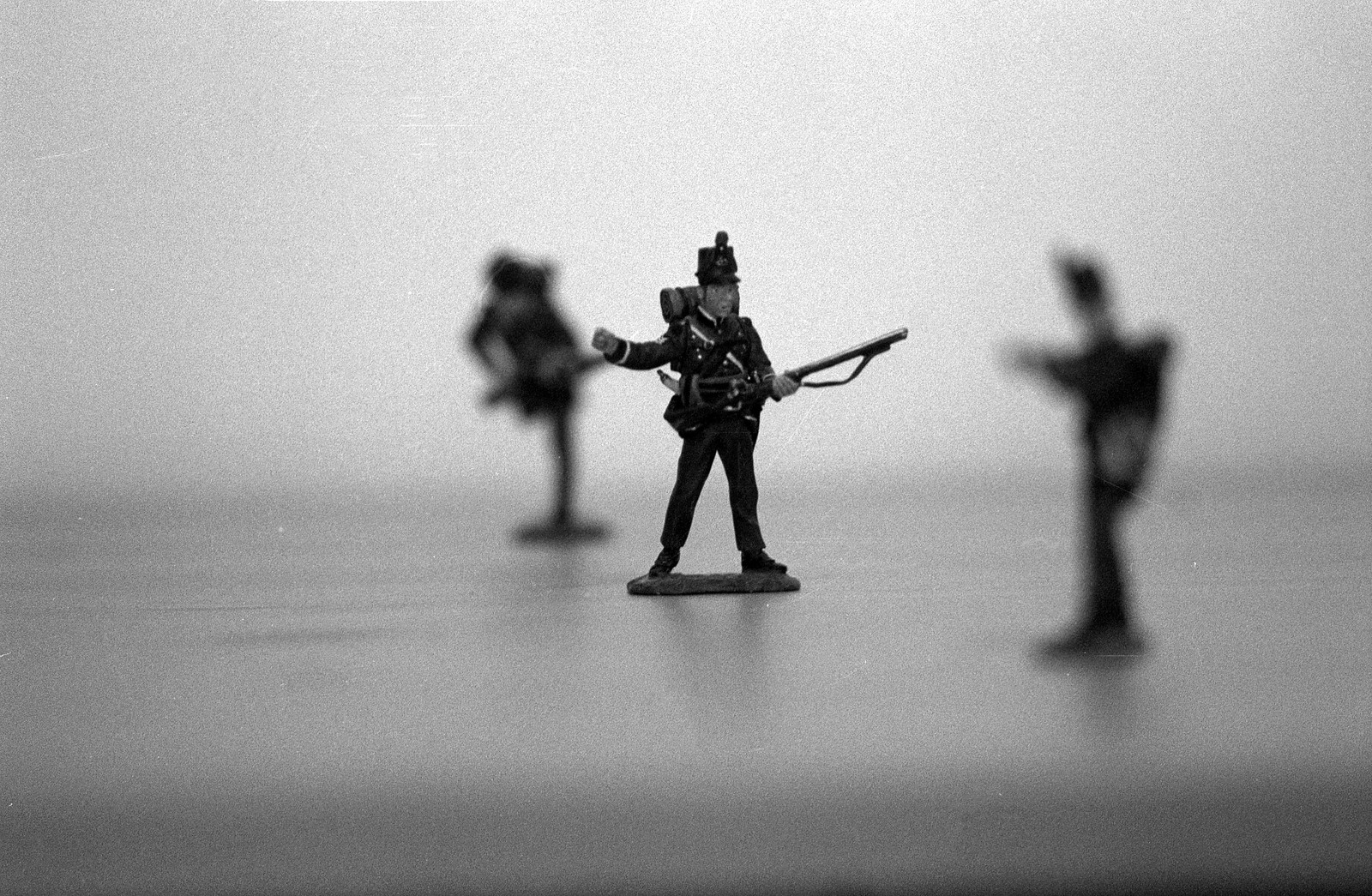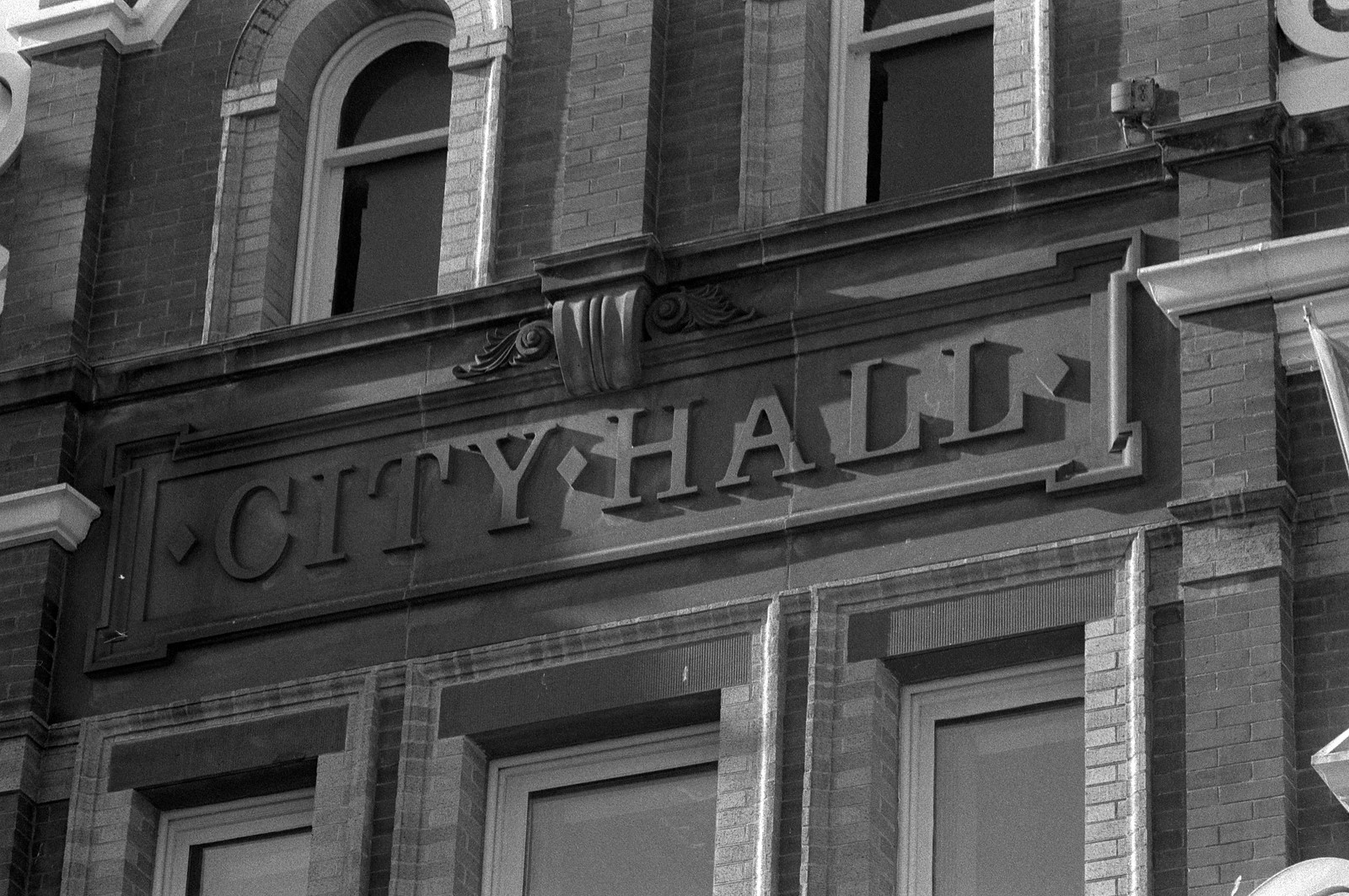If there is one lens that I use even less than my Rokkor 135/2.8, it’s my Nikkor 135/2.8. This beat-up lens is one of the groups that I got when I received my Nikon F3 kit back many years ago. In that kit along with the 135/2.8 was the 105/2.5 which got all the attention and the glory. I was always more of a fan of the 105mm focal length and the 85mm focal length before that. The 135mm length seemed a little redundant. Then last year when Dan Novak ran the 135mm challenge I dug out this lens from the back of the shelf threw it on my Nikon FA and had some fun and turned out some good results.
Lens Specifications
Make: Nippon Kōgaku K.K.
Model: AI Nikkor 135mm 1:2.8
Focal Length: 135mm
Focal Range: ∞ – 1.3m
Aperture: f/2.8 – f/32, 7 Blades
Structure: 5 Elements in 4 Groups

Nikon FE – AI Nikkor 135mm 1:2.8 – Ilford Delta 400 @ ASA-400 – Rollei Supergrain (1+9) 6:00 @ 20C
Build Quality
Like all AI Nikkor lenses, the 135/2.8 is built like a tank and can take a beating and still carry on just fine. I take a look at the difference between the 105/2.5 and 135/2.8, and I can quickly tell which one was the former owners favourite. The 135/2.8 looks like it went through a war zone! Yet, it remains in perfect working order. While slightly bigger than the 105/2.5 it doesn’t add much weight to your camera, having shot the lens on the F3 and FA both with the motor drive the balance it perfect, but it also works great with little change in balance on the FE without a motor drive attached. Which means that you can shoot this with a certain steadiness, just make sure you’re running shutter speeds above 1/125″. When I was out testing the lens, I ensure I got speeds above 1/250″, but I was also shooting ASA-400 film on a bright summer day. The focusing ring is big and smooth and allows for rapid focusing, but it can be tricky to handle fine focusing options. The aperture ring is beautiful and clicky; you always know where your stops are plus being able to stop down to f/32 means you get a decent depth of field. And the built-in lens hood is a life-saver!

Nikon FE – AI Nikkor 135mm 1:2.8 – Ilford Delta 400 @ ASA-400 – Rollei Supergrain (1+9) 6:00 @ 20C
Nikon FE – AI Nikkor 135mm 1:2.8 – Ilford Delta 400 @ ASA-400 – Rollei Supergrain (1+9) 6:00 @ 20C
Nikon FE – AI Nikkor 135mm 1:2.8 – Ilford Delta 400 @ ASA-400 – Rollei Supergrain (1+9) 6:00 @ 20C
Nikon FE – AI Nikkor 135mm 1:2.8 – Ilford Delta 400 @ ASA-400 – Rollei Supergrain (1+9) 6:00 @ 20C
Nikon FE – AI Nikkor 135mm 1:2.8 – Ilford Delta 400 @ ASA-400 – Rollei Supergrain (1+9) 6:00 @ 20C
Image Quality
You cannot fault the 135/2.8 for image quality; it delivers excellent image quality at almost any aperture. I say almost because I feel that the lens doesn’t perform as best it can under f/5.6. Between f/2.8 and f/4, I find that the shallow depth of field and fall-off in the corners are less than ideal. But after f/5.6 you lose the fall-off, although it’s between f/8 and f/22 that the lens begins to show off what it can do. And with a top aperture of f/32, this lens provides a decent depth of field given its focal length. When it comes to the out of focus elements of the images created by the lens, they are pleasing, smooth, soft, nothing overly special but certainly help keep the focus on the subject and provides excellent separation of your subject from the background. While it tends to flare when there is harsh light, the built-in hood works to eliminate that aspect easily. Overall the lens delivers a quality image, but you do want to keep it stopped down to f/5.6 which might cause trouble in low-light conditions, but a fast film or flash will certainly help get the needed shutter speeds.





Applications
As a short telephoto lens, the Nikkor 135/2.8 makes for a stunning portrait lens but also a photojournalism lens. When I was out testing the beast, I ran across a house fire that the Stratford fire department had just gotten under control an hour before I got into the town, having the 135mm allowed me to get in close to the action without physically getting close to the incident. Plus there were a lot of people (who were all wearing masks), so with the lens, I could shoot through the gaps. The lens would also make for a solid addition to any travel kit for the same reason. The lens also makes for a good option for sports or action photography when space is limited, and you can’t bring those massive telephoto lenses, so for a local arena or similar sports field. Plus having that f/2.8 aperture helps in low light situations. Portraiture and Architectural details are another two good options for the lens. The one thing that the lens is probably not the best for is macro work, especially with a 2.7x magnification factor and a close focus of 1.3m you still have to be somewhat distant from your subject, not always ideal. In addition to working well on film cameras, I find the lens an excellent option with digital cameras, a mirrorless with an adapter and I have used the glass with my a6000 on a couple of occasions.





The Low Down
Often settled in the backseat to the 105/2.5 (poor lens it can’t even escape its famous cousin even in my review) the Nikkor 135/2.8 is not a bad lens. And actually, it was among the most popular short telephoto lenses from the Nikon lineup for many years, an excellent compact lens that could handle any situation you could throw at the glass. It, however, does not remain a favourite of mine, but I do hope to get it out more often when I need that little bit extra reach. There are two versions of this lens out there, the older AI (which I reviewed here) and the newer AI-S, both have the same general build quality and optical construction. The difference between the two is the coating; some folks prefer the contrast you get with the AI-S version and others prefer the AI. I have not shot with the AI-S version so cannot comment. A good copy of the lens will run you between 150-200 dollars on the used market, expect to pay a little bit more for the AI-S version. Of course, if you’re running a modern SLR, you might want to look at the DC-Nikkor 135mm f/2D, it’s a real beast of a lens and has the price tag to match. While I don’t use the lens often, I don’t think I’ll be getting rid of it anytime soon.
Further Reading
Don’t just take my view on the Nikkor 135 f/2.8, check out these other reviews.
Ken Rockwell – AI-S Nikkor 135mm f/2.8 Review
MIR – Nikkor 135mm f/2.8 AI Review
Jake Horn Photography – Nikkor 135mm f/2.8 AI-S Review
Happy – A Photo Blog By Arkady Shapoval – Nikkor 135mm f/2.8 AI Review
